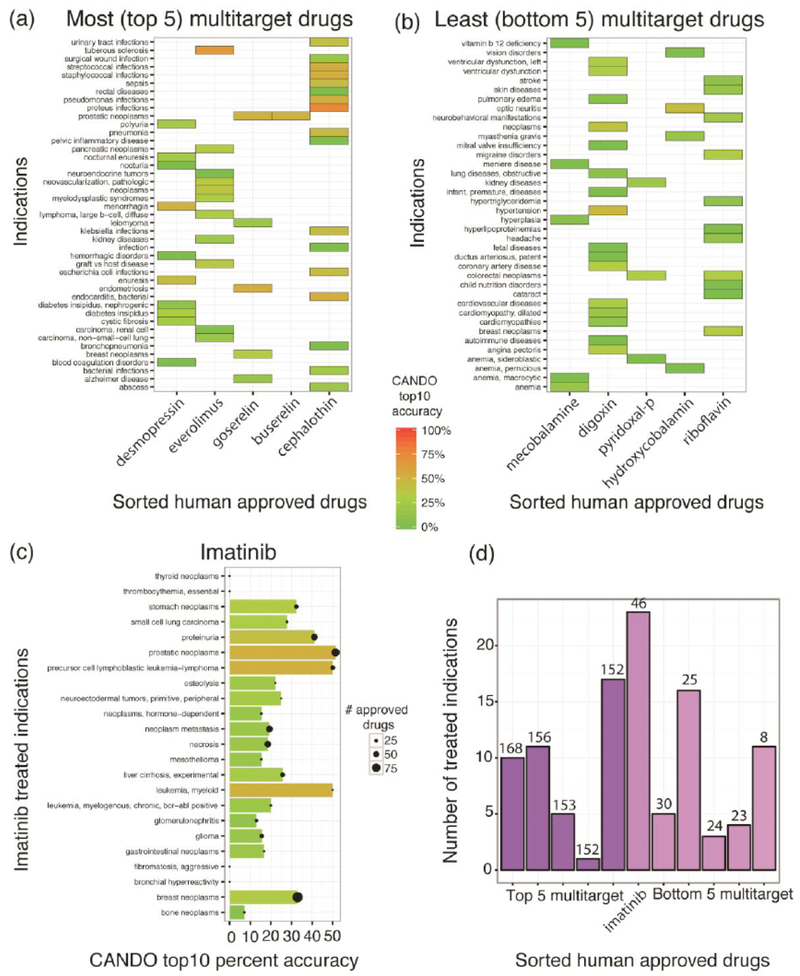Fig. (5).

Relationship between indication type and polypharmacology. Panels (a, b) show the top five most and bottom 5 least multitargeting/polypharmacological drugs predicted by the CANDO platform sorted by decreasing order of predicted number of protein interactions. The indications treated by these compounds are listed and the CANDO top10 percent accuracy (retrieval accuracy of the CANDO platform of known drugs for a particular indication in the top 10 ranked list of predictions obtained using compound-proteome signature similarity) is highlighted using colored tiles. There is no simple correlation between multitargeting/polypharmacology and CANDO accuracy for all 3,733 compounds (Fig. 4) but the most multitargeting drugs treat diseases such as B-cell lymphoma, graft vs host disease, lung, kidney, breast, and prostate cancers along with several infectious indications. In contrast, the least multitargeting/polypharmacological drugs are either vitamin supplements or active forms of Vitamin B group, and treat hypertension, vitamin deficiency, nutrition and anemic disorders, and visually contribute lower to drug retrieval accuracy than most multitarget drugs. Panel (c) shows the indications treated by imatinib, one of the few well-known polypharmacological drugs. Imatinib treats neoplastic diseases, most of which show higher CANDO drug retrieval accuracy than the least polypharmacological drugs, shown in panels (b, c). The black filled circles on each bar represent the number of drugs known to treat the indications also treated by imatinib. Panel (d) shows the relationship between the number of treated indications by most and least multitargeting drugs from panels (a) and (b) respectively, in comparison to imatinib. The bars are colored by the number of predicted interacting proteins that is also indicated on the top of each bar of the sorted list of multitargeting drugs. There seems to be no relation between the number of indications treated by multitargeting drugs and the extent of multitargeting, defined as the number of predicted protein interactions. Altogether, these results indicate the complex nature of polypharmacology and its contribution to drug repurposing, which extends beyond interaction with multiple proteins: imatinib with much lower predicted number of protein interactions treats neoplastic indications similar to the most multitargeting compounds and exhibits a greater repurposing potential based on the number of indications it is approved for treatment.
